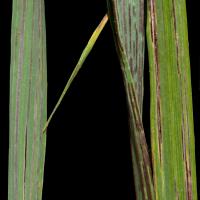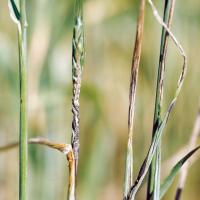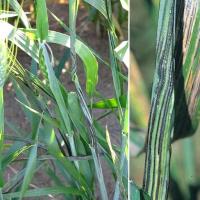Diagnosing flag smut of wheat
A fungal disease of wheat that occurs throughout the Western Australian wheatbelt. Yield of affected plants can be reduced but incidence of this disease is low. Wheat is the only host of the strain attacking it. Other strains of the fungus attack a number of grasses.
What to look for
- Affected plants often stunted and hidden in crop.
- Severely affected crops can release black spores during harvest.
Paddock
- Long grey-black streaks with powdery black spores (which rub off easily) on leaves, leaf sheaths and occasionally stems.
- Leaves often twisted and split lengthways.
- Heads may fail to emerge or produce poor grain.
Plant
Where did it come from?

Contaminated seed

Contaminated soil
- Infection occurs when spores either carried on the seed (seed-borne) or present in the soil (soil-borne) infect germinating wheat plants.
- Spores of the fungus can survive in soil for up to seven years.
Management strategies
- The disease is well-managed by fungicide seed dressing and occurs only sporadically, usually following successive plantings of untreated susceptible varieties.
See also
Where to go for expert help
Page last updated: Tuesday, 3 May 2016 - 9:50am




